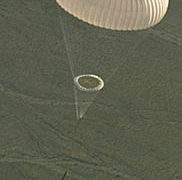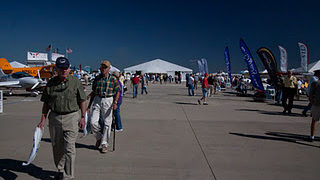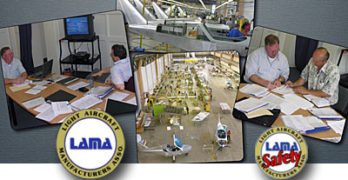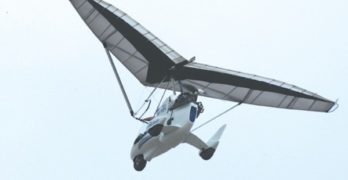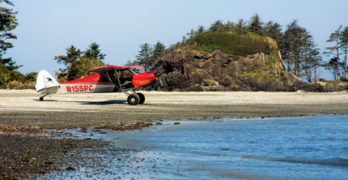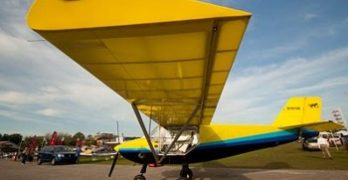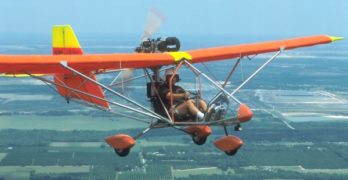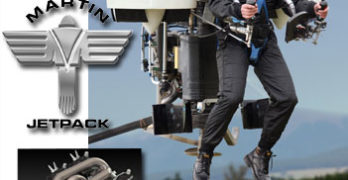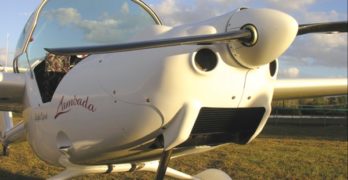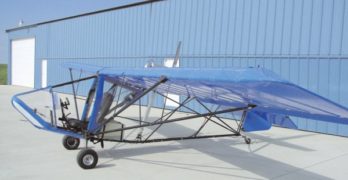Watch the video. Open your mind. Put yourself in this cockpit. Imagine it happening to you. Think of the people you love and who love you. *** Dan Johnson wrote about this yesterday in his blog post (my writing home away from home) with some tasty comments based on his years at BRS parachutes, so I’ll direct you there for his in-depth overview. *** My purpose in posting here is more personal. I want you to fly safely your entire, long life. *** But any pilot — and you know who you are — who has so far convinced him/herself that an airframe parachute shouldn’t be an essential component of any aircraft, please watch the video. *** Then try to make a rational argument afterwards against recreational aircraft carrying onboard chutes. *** Yes, the pilot is engaging in high-stress aerobatics, which the vast majority of us will never do.
Search Results for : BRS parachute
Not finding exactly what you expected? Try our advanced search option.
Select a manufacturer to go straight to all our content about that manufacturer.
Select an aircraft model to go straight to all our content about that model.
SAFE!
Sebring EXPO: 2.5 Perfect Days
Sebring is alive and well and gliding along better than ever. That’s more than I can say for the wireless where I’ve tried to post since Thursday night, so today, you get two point five posts for the price of one. *** First bit of news: Opening day Thursday was the best attended in the show’s eight year history (not five years as I doofishly reported the other day). Aiding and abetting: beautiful, absolutely beautiful weather. No hurricanes, no clouds of leaflets from Republican Presidential hopefuls, just a lavishly enjoyable (for us snowbirds at least) 70 degrees, with a steady 10 knot wind a good part of the day, followed by a crisp, clear night. Thank the Maker. *** Your humble blogster took full advantage of opening day by spending almost half of it shooting and flying the new BRM Bristell S-LSA (yes, it’s ASTMified). A very, very sweet ship.
Politics and LSA… 1st in a Series: Certification
In a series of posts from time to time, I will explore the relationship between government(s) and aviation. I plan to take a global view but the essence is this: Since the beginning of aviation (or at least since near the beginning) government has approved any aircraft the public may buy and fly. A newly designed model, after proving its airworthiness to company engineers and management, had to gain government approval before sales could begin. *** The cost curve has been steeply upward. Cirrus Design is a company whose emergence I watched very closely when I worked for BRS parachutes some years ago. We were deeply involved with Cirrus in the certification of a parachute system for the SR20. My front-row seat gave an intimate look into the approval process. Cirrus reported a cost of many tens of millions of dollars to get a Part 23 Type and Production Certificate. *** Then came LSA.
All-American Revo Sets New Standard
Behold the Revo, a new benchmark in weight-shift trike design.
Look carefully and you’ll see the Revo is not like any weightshift
light-sport aircraft you’ve seen before. The Revo had to
surpass impressive work by larger, more established companies to leap
to the forefront. Any way you look at it, the Revo is simply extraordinary.
I’ve been lucky to fly many trikes over the years. Every few years, one
of the leading producers would make a remarkable step forward in the
design of these flying machines with changes that tended to be evolutionary,
not revolutionary. Among them, I cannot recall a clean sheet of
both carriage and wing debuted as a single aircraft.
Welcome to Revo from Evolution Trikes, an all-new, blazingly fast
American trike like none before it.
The more I examined the Revo and then flew with Larry Mednick of
Evolution (and Tampabay Aerosports), I realized even Air Création’s
beautiful Tanarg trike had been done one better.
Best LSA Picks of 2010
More than 20 Top LSA You Can Buy
The light-sport aircraft industry hangs in there, although sales numbers, as with general aviation, still struggle to gain safe altitude in the stormy economic skies. Encouraging item: LSA sales in 2009 represented nearly 25% of all GA piston purchases. Another surprise: Most of the 107 models available for sale here and abroad are still in production with more new models in the pipeline! Nobody’s getting rich (this is aviation, remember?), but most makers believe the turnaround will come. That’s the spirit!
And with the Euro taking heat against the dollar lately as Europe goes through its own econoclysm, U.S. prices for foreign-produced LSA could drop. Many airframe makers lowered prices, but the industry still faces challenges: ongoing dyspepsia imbued by the sluggish recovery; market recognition… many people still aren’t aware of what an LSA is, maybe that’s why 20% of all U.S. sales in the U.S.
Sun ‘n Fun Day 2: Toto, Are We…?
…back in Kansas? Little Totomeister, I gotta say, the winds blew so strong today I saw a full chicken caesar salad in its covered plastic container sail horizontally by my head like a UFO on a mission. *** I even had to postpone a photo shoot until tomorrow at dawn. Oh joy. *** No complaints though. It was a gorgeous day which started out with a very enjoyable hour-long demo flight in the Rans S-6ELS, a lovely airplane I’ve touted lately for its low price – $63,000. *** My demo pilot, Mark Pringle (“Just like the potato chips,” he said) took me up for some turns, dutch rolls, stalls, and a couple landings in a mildly bumpy airmass, at least for 8:30 this morning. *** First impressions (look for my flight report in an issue soon) — throttle in, rolling down the runway, one-thousand-one, one-thousand-two…hey, we’re airborne already? That lightweight flivver fairly hopped into the air.
Aero-Lite Revisited
[UPDATE fall 2009 — Aero-Works left the business several years ago (though in late 2009, originator Terry Raber said he will return to production). Meanwhile, producer Wings of Freedom has begun work on the Phoenix-103, a derivation of the Aero-Lite 103 but with numerous small changes.
This article refers to the aircraft built by AeroWorks and will not be identical to the Aero-Lite 103. The companies are different and Terry Raber has no association with Wings of Freedom.
In the uncertain “new world of Sport Pilot,”
one thing remains exactly as it was – FAR Part 103. While new rules and regulations may shake the ground under the feet of ultralight pilots, Aero-Works continues to produce their popular AeroLite 103. If you build it carefully, you can still enjoy a twin-cylinder ultralight with lots of features that fits Part 103.
Even airline pilots who normally fly under smothering regulations appreciate FAA’s simplest, least intrusive rule, Part 103.
Martin Jetpack as a Part 103 Ultralight
The Martin Jetpack flew at Oshkosh in a carefully controlled environment (photo). Two people held special “training wheel” grips on each side and Jetpack never lifted more than a couple feet off the ground. If you weren’t in the front row of the airshow demonstration you might have missed the flight (although not the noise). *** But Jetpack did fly and can qualify as a Part 103 ultralight, according to New Zealand developer Glenn Martin. Besides being the most compact Ultralight Vehicle at 5 x 5 x 5 feet, it’s probably the most expensive at $100,000. Martin said he has been working on the Jetpack for 30 years also developing a 200-hp two-stroke piston engine that pumps air through ducted fans to adjustable steering vanes to control flight. Jetpack specs *** A Jetpack pilot controls pitch and roll with the left joystick. A right stick is both a twist grip throttle and pivoting yaw control.
Lambada’s Choice
Motor Along Economically
Not all light sport aircraft (LSA) are made alike.
You probably knew that already, but consider
the Lambada. This sleek composite 2-seat
shoulder wing is part airplane, part glider and it has
the interchangeable wing tips to prove it.
For a soaring enthusiast like myself, flying the
Lambada gratified a desire I’ve had for years, since I
first saw the Urban Air design at a German airshow. On
January 9, 2008, I went aloft in a Lambada with Josef
Bostik – a former U.S. National Champion hang glider
pilot turned airline captain – at Wallaby Ranch, an
iconic hang glider park in Central Florida where hang
gliders are towed aloft behind specially built ultralights.
The particular Lambada I flew bore N-number
N109UA. Bostik indicated that 108 other Lambada
aircraft are flying around the world, though the
one I flew is the first ’08 model to pass ASTM standard
certification.
T-Bird I and the Future
An Easy-Flying Ultralight
Let’s see. A single-seat plane that can be purchased as an ultralight,
assuming your engine selection doesn’t push it over Part
103’s weight limit, or built from a kit and registered as an
Experimental-class aircraft, or purchased as a light sport aircraft
once the manufacturer meets the ASTM certification. What’s a pilot to do?
That’s the conundrum facing T-Bird I shoppers. This single-seater can be
a Part 103-compliant ultralight when using a Rotax 277, still available on
the used-engine market, though no longer supplied from Rotax’s Austrian
factory. Few prospective owners would select this engine, yet a more powerful
engine would push the T-Bird I over the Part 103 weight limit. Does that
leave only the Experimental amateur-built kit
option?
The answer is no, and yes. To explain this apparent
contradiction, a kit-built T-Bird I with a larger
Rotax engine or the 60-hp HKS 700E engine could
still qualify under the 51% rule.
- « Previous Page
- 1
- …
- 3
- 4
- 5
- 6
- 7
- …
- 18
- Next Page »


